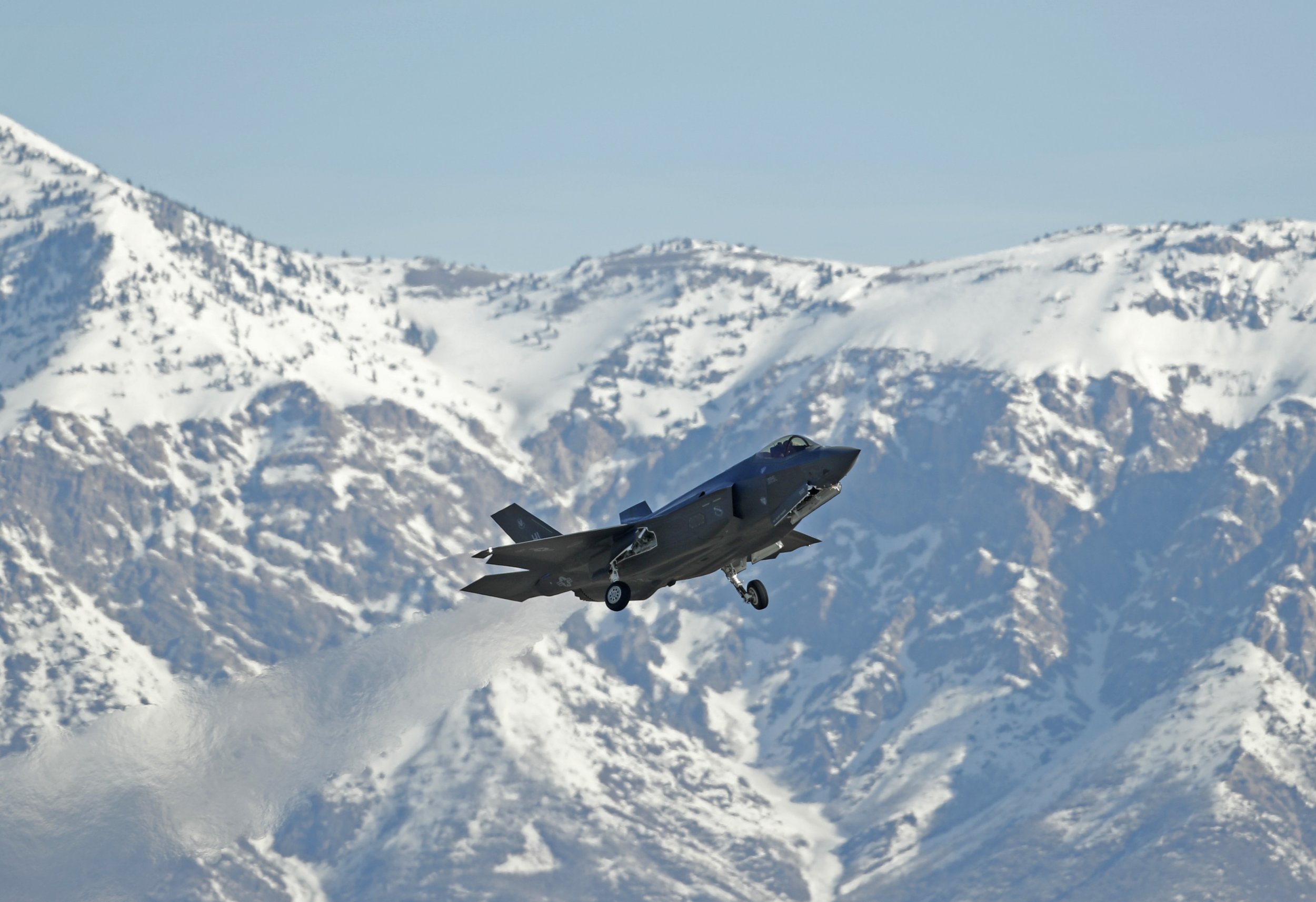
With North Korea launching an intercontinental ballistic missile (ICBM) late last month that was reportedly capable of striking the U.S., you may wonder if the U.S. has the ability to shoot such a rocket down.
The U.S. has already developed some ground-based defense systems that have had unreliable success in stopping missiles, but an aerial strike could soon be an option.
Missiles that F-35 stealth fighters already carry need only slight tweaks to be able to target other missiles, not other fighters, Justin Bronk, an expert on aerial combat at the Royal United Services Institute, told Business Insider this week.
"By changing the firmware a bit, tweaking it a bit, you could gain a theoretical" capability to engage ballistic missiles, Bronk said.
Check Six: See the top #F35 moments from 2017. https://t.co/VcEuR8aSaJ pic.twitter.com/3nAW5zfeNH
— F-35 Lightning II (@thef35) December 22, 2017
However, there are a few caveats to the technology. The F-35 would need to be positioned very close to the launching missile, which would pose a high risk for the fighter. The F-35 also could utilize the U.S. Navy's network to direct a missile from a ship at a rocket fired by North Korea.
The F-35s have been deployed to Japan as tensions between North Korea and the U.S. rise, with the rogue regime calling sanctions the United Nations approved last Friday an "act of war."
Last week, the Trump administration reportedly stated that officials were plotting a "bloody nose" attack to damage North Korea's missile development program.
Besides F-35s, the U.S. military has been creating technology with the potential to stop missiles.
In July, the U.S. successfully tested its Terminal High Altitude Area Defense (THAAD) system designed to intercept short, medium and intermediate-range ballistic missiles, which are not ICBMs. The system in Alaska intercepted a ballistic missile the U.S. Air Force fired over the Pacific Ocean.
The U.S. also has engineered a Ground-based Midcourse Defense (GMD) system that in May intercepted an ICBM that was launched from 4,200 miles away. The feat was impressive, but the system has a success rate of only 55 percent, according to The Atlantic.
Laser technology also could stop an ICBM. The U.S. reportedly hopes to equip drones with lasers to prevent North Korea from even launching a missile. The challenge is to develop lasers that are strong enough yet small enough to fit inside drones.
The U.S. has a missile defense system that is a complex web of satellite sensors, radars and interceptors aimed at detecting and destroying incoming warheads.
"If North Korea were to launch only one missile at us, we could probably shoot it down," said Michael Elleman, a senior fellow for missile defense at the International Institute for Strategic Studies. "But their new missile could carry some very simple decoys, and it's not certain that the missile we send out will be able to tell the difference between debris, decoys and a real warhead."
Uncommon Knowledge
Newsweek is committed to challenging conventional wisdom and finding connections in the search for common ground.
Newsweek is committed to challenging conventional wisdom and finding connections in the search for common ground.
About the writer
A Los Angeles native, Jessica Kwong grew up speaking Spanish, Cantonese and English, in that order. Her journalism career started ... Read more
To read how Newsweek uses AI as a newsroom tool, Click here.








